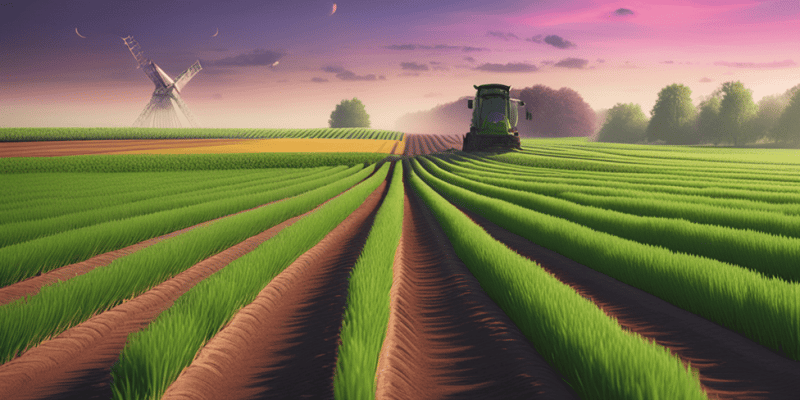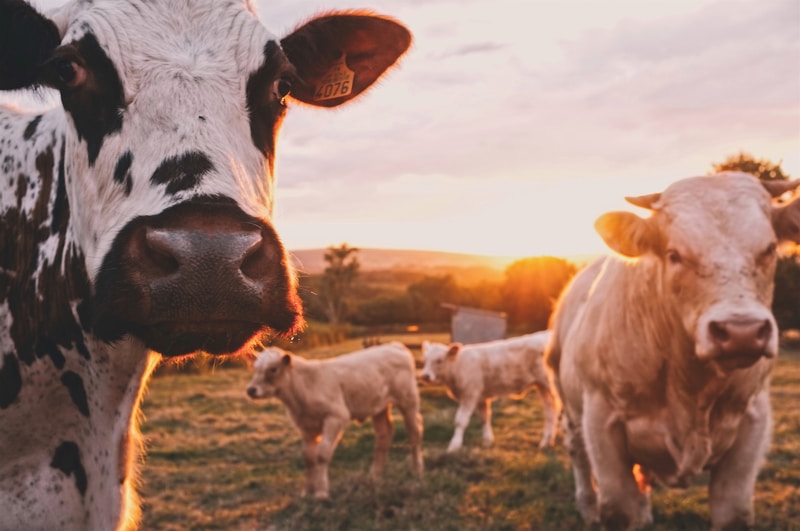9 Questions
What is crop rotation?
What is monocropping?
What is the three-field rotation?
What is the four-field crop rotation?
What is the benefit of a nitrogen-fixing crop in crop rotation?
What is the benefit of cover crops in crop rotation?
What is the disadvantage of green manure from legumes in crop rotation?
What is the advantage of crop rotation over tillage for weed management?
What is the advantage of crop rotation in organic farming?
Summary
Crop rotation is the practice of growing a series of different types of crops in the same area across a sequence of growing seasons. Growing the same crop in the same place for many years in a row, known as monocropping, gradually depletes the soil of certain nutrients and selects for a highly competitive pest and weed community. Agriculturalists have long recognized that suitable rotations make it possible to restore or to maintain productive soils. From the end of the Middle Ages until the 20th century, Europe's farmers practiced a three-field rotation, where available lands were divided into three sections. The four-field crop rotation became a key development in the British Agricultural Revolution. A nitrogen-fixing crop, like a legume, should always precede a nitrogen depleting one. Crop rotation is a required practice, in the United States, for farm seeking organic certification. The use of different species in rotation allows for increased soil organic matter, greater soil structure, and improvement of the chemical and biological soil environment for crops. Studies have shown that crop rotations greatly increase soil organic carbon content, the main constituent of soil organic matter. Highly diverse rotations spanning long periods of time have shown to be even more effective in increasing soil organic carbon. Rotating crops adds nutrients to the soil. Legumes have nodules on their roots which contain nitrogen-fixing bacteria called rhizobia. Crop rotation can be a highly effective way of controlling pests and pathogens.Benefits of Crop Rotation
- Crop rotation can control pests and diseases by interrupting pest life cycles and habitat, reducing the level of nematodes in the soil, and breaking pest cycles.
- Cover crops in crop rotations crowd out weeds through competition and slow the growth of the remaining weeds while also reducing the number of viable seeds in the soil.
- Crop rotation can reduce soil erosion by reducing raindrop impact, sediment detachment, and surface runoff, and improving the resilience of soils when subjected to periods of erosion and stress.
- Increasing the biodiversity of crops in a rotation can host a greater diversity of fauna and beneficial microorganisms in the soil, increase nutrient availability, and increase the resilience of agro-ecological systems.
- Crop rotation contributes to increased yields through improved soil nutrition and allows more land to be farmed with the same amount of machinery and labor.
- Different crops in the rotation can reduce the risks of adverse weather for the individual farmer.
- Challenges associated with crop rotation include the need for planning, fixed and changing conditions, and the potential for imbalances in soil nutrient composition or a buildup of pathogens affecting a critical crop.
- Green manure from legumes can lead to an invasion of snails or slugs and the decay from green manure can occasionally suppress the growth of other crops.
- Crop rotation is particularly useful in organic farming, where pest control must be achieved without synthetic pesticides.
- Cover crops are considered conservation crops because they protect otherwise fallow land from becoming overrun with weeds.
- Crop rotation has advantages over other common practices for weed management, such as tillage, which exposes weed seeds that may have gotten buried and buries valuable crop seeds.
- Crop rotations have a positive effect on soil aggregates and reduce wind erosion, making them better able to resist raindrop impact and water erosion.
Description
Test your knowledge of the benefits and challenges of crop rotation with this informative quiz! From controlling pests and diseases to improving soil nutrition and reducing erosion, crop rotation is a key practice in sustainable agriculture. But do you know all the ins and outs of this ancient farming technique? Take this quiz to find out! You'll learn about the history of crop rotation, the benefits of different types of crops in rotations, and the challenges that come with planning and executing a successful rotation. Whether you're a farmer,



